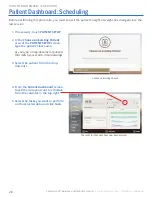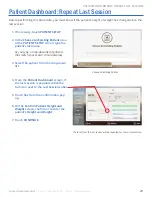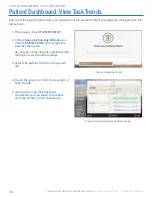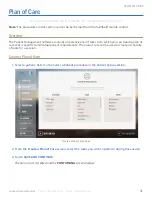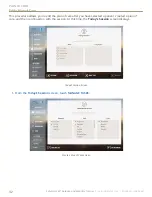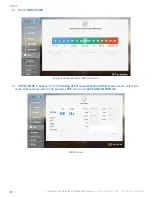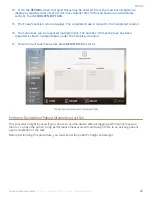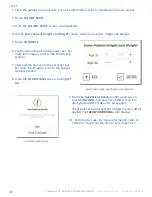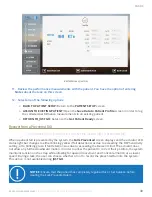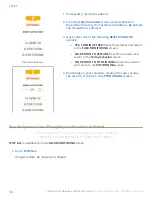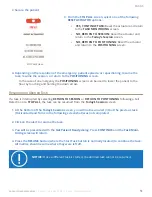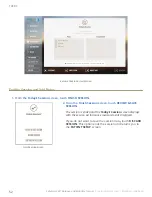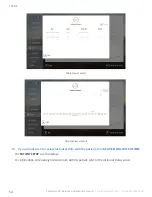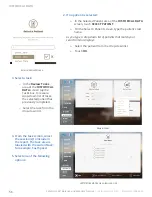
Tasks
42
SafeGait 360° Balance and Mobility Trainer |
Instructions for Use | SG360-IFU-004 Rev B
Repetition Limits Dialog
NoTIce:
A transfer task cannot begin unless the repetition limits are set.
7.
With DFP, the actuator distinguishes the difference between the patient’s intentional downward
movements - for example, while transferring from a standing to sitting position - and the unin
-
tentional downward movement of a fall by measuring the velocity of the patient’s downward
movement.
◉
dfP seNsITIVITy
is the relative level of downward speed on the strap that is required to
trigger fall detection. The sensitivity level is adjustable, allowing you to accommodate patients
with varying levels of independence. A very independent patient might move more quickly
while performing a task than a patient who is more impaired. In the former case, the Medium
or Low sensitivity setting might be appropriate.
◉
dfP seNsITIVITy
can be set to a default of High or Medium. For more information, refer to
the Settings section.
◉
If it is necessary to adjust the
dfP seNsITIVITy
setting for a task, toggle the
dfP seNsITIVITy
bar, located at the bottom right of the
Task MoNITorING
screen, to the desired setting.
High:
Fall detection is triggered by a relatively low amount of downward speed on the strap; for
patients with a severe level of impairment.
Medium:
Fall detection is triggered by a medium amount of downward speed on the strap; for
patients with a moderate level of impairment.
low:
Fall detection is triggered by a relatively high amount of downward speed on the strap; for
patients with a mild level of impairment.
6. If this is a transfer task, establish the boundaries for
individual patient repetitions by defining an upper and
lower limit.
◉
From the task area of the
Task MoNITorING
screen, touch
seT lIMITs
. This option only displays
for a transfer task.
◉
Position the patient in the upper limit position; for
example, standing fully upright.
◉
From the Repetition Limits screen, touch
seT UPPer
lIMIT
.
◉
Position the patient in the lower limit position; for
example, sitting in a chair.
◉
Touch
seT loWer lIMIT
. The boundaries are now
set.
◉
If you would like to count the patient positioning as a
repetition, touch
coNTINUe & coUNT THIs rePeTI-
TIoN
.
◉
Otherwise, simply touch
coNTINUe
.

